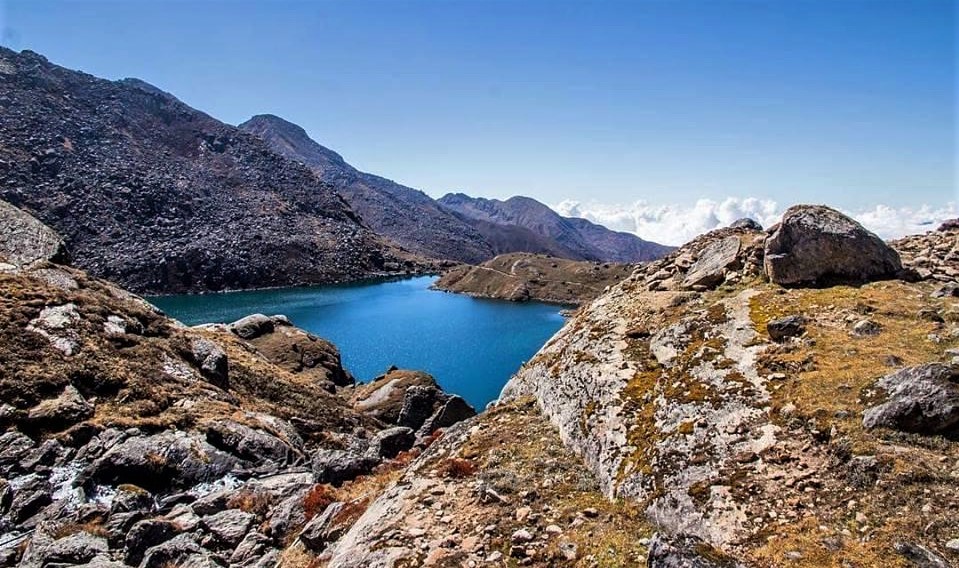Everything you need to know about Bhairav Kunda | Interesting things about Bhairav Kunda
Bhairav Kunda, also known as Bhairab Kunda, is a sacred high-altitude lake located in the Sindhupalchowk district of Nepal. It is a popular pilgrimage site for both Hindu and Buddhist devotees and is known for its religious and cultural significance. Here's everything you need to know about Bhairav Kunda:
1. Location:
Bhairav Kunda is located in the Sindhupalchowk district of Nepal at an elevation of approximately 4,250 meters (13,944 feet) above sea level, in the vicinity of the Langtang and Rolwaling regions. It is situated in the northeast of Kathmandu, close to the Nepal-Tibet border.
2. Religious Significance:
Bhairav Kunda holds immense religious significance for both Hindus and Buddhists. According to Hindu mythology, Bhairav Kunda is believed to be the site where Lord Shiva created the holy lake by thrusting his trident into the ground. The lake is associated with Lord Bhairav, an incarnation of Lord Shiva, and is considered a sacred pilgrimage site. Hindu devotees visit Bhairav Kunda during the festival of Janai Purnima (Raksha Bandhan) to take a holy bath and perform religious rituals. Buddhists also consider Bhairav Kunda as a sacred site and have a small shrine dedicated to Lord Buddha nearby.
3. Trekking Route:
The trek to Bhairav Kunda typically starts from a village called Jalbire, which is accessible by road from Kathmandu. From Jalbire, the trail ascends through terraced fields, lush forests, and traditional villages inhabited by Tamang and Sherpa communities. The trek offers a mix of cultural exploration, natural beauty, and religious significance. The route takes you through scenic landscapes, including dense forests of rhododendron and oak, picturesque valleys, and panoramic mountain views.
4. Cultural Experience:
The Bhairav Kunda region is predominantly inhabited by the Tamang ethnic group, known for their rich cultural heritage. During the trek, you'll have the opportunity to interact with the local communities, experience their traditional lifestyle, and witness their unique cultural practices. Tamang hospitality is renowned for its warmth and friendliness, allowing trekkers to immerse themselves in the local culture, traditions, and cuisine.
5. Natural Beauty:
The trek to Bhairav Kunda offers stunning natural beauty throughout the journey. The trail takes you through diverse landscapes, including terraced fields, dense forests, and alpine meadows adorned with colorful wildflowers. As you ascend, you'll be rewarded with breathtaking views of the surrounding Himalayan peaks, including Langtang Lirung, Jugal Himal, Dorje Lakpa, and Rolwaling Himal. The serene Bhairav Kunda lake, with its crystal-clear waters, surrounded by rugged mountain scenery, adds to the ethereal beauty of the region.
6. Janai Purnima Festival:
Janai Purnima, also known as Raksha Bandhan, is a significant festival celebrated by Hindus in Nepal. It usually falls in the month of August and holds particular importance at Bhairav Kunda. During this festival, devotees gather at the lake to take a holy bath and perform religious rituals. Brahmin priests change the sacred threads (janai) worn by Hindu males, symbolizing purity and protection. The festival is characterized by cultural festivities, chanting of religious hymns, and the exchange of blessings and goodwill.
7. Camping and Accommodation:
The Bhairav Kunda trek is primarily a camping trek, as there are limited teahouse facilities along the route. Trekkers are advised to carry camping equipment, including tents, sleeping bags, and cooking utensils. Camping near Bhairav Kunda allows trekkers to experience the tranquility of the surroundings and connect with nature in a serene mountain environment.
8. Weather and Best Time to Trek:
The best time to undertake the Bhairav Kunda trek is during the autumn (September to November) and spring (March to May) seasons. These months offer stable weather conditions, clear skies, and comfortable temperatures for trekking. The monsoon season (June to August) should be avoided due to heavy rainfall, which can make the trails slippery and increase the risk of landslides.
9. Permits:
To trek in the Bhairav Kunda region, you'll need to obtain the Langtang National Park Entry Permit and the TIMS (Trekkers' Information Management System) card. These permits can be obtained in Kathmandu or at the park entrance in Sundarijal.




.jpg)



